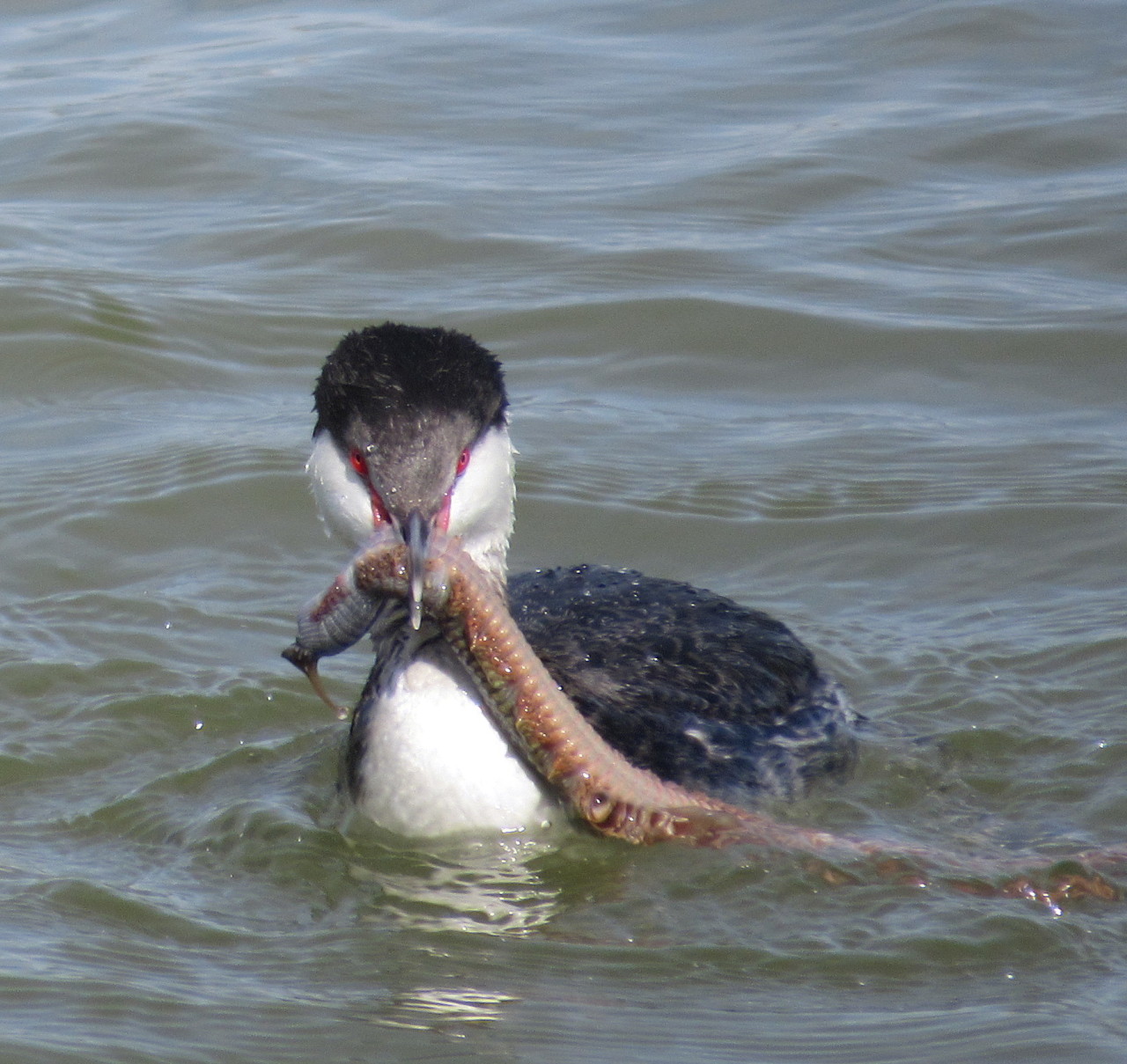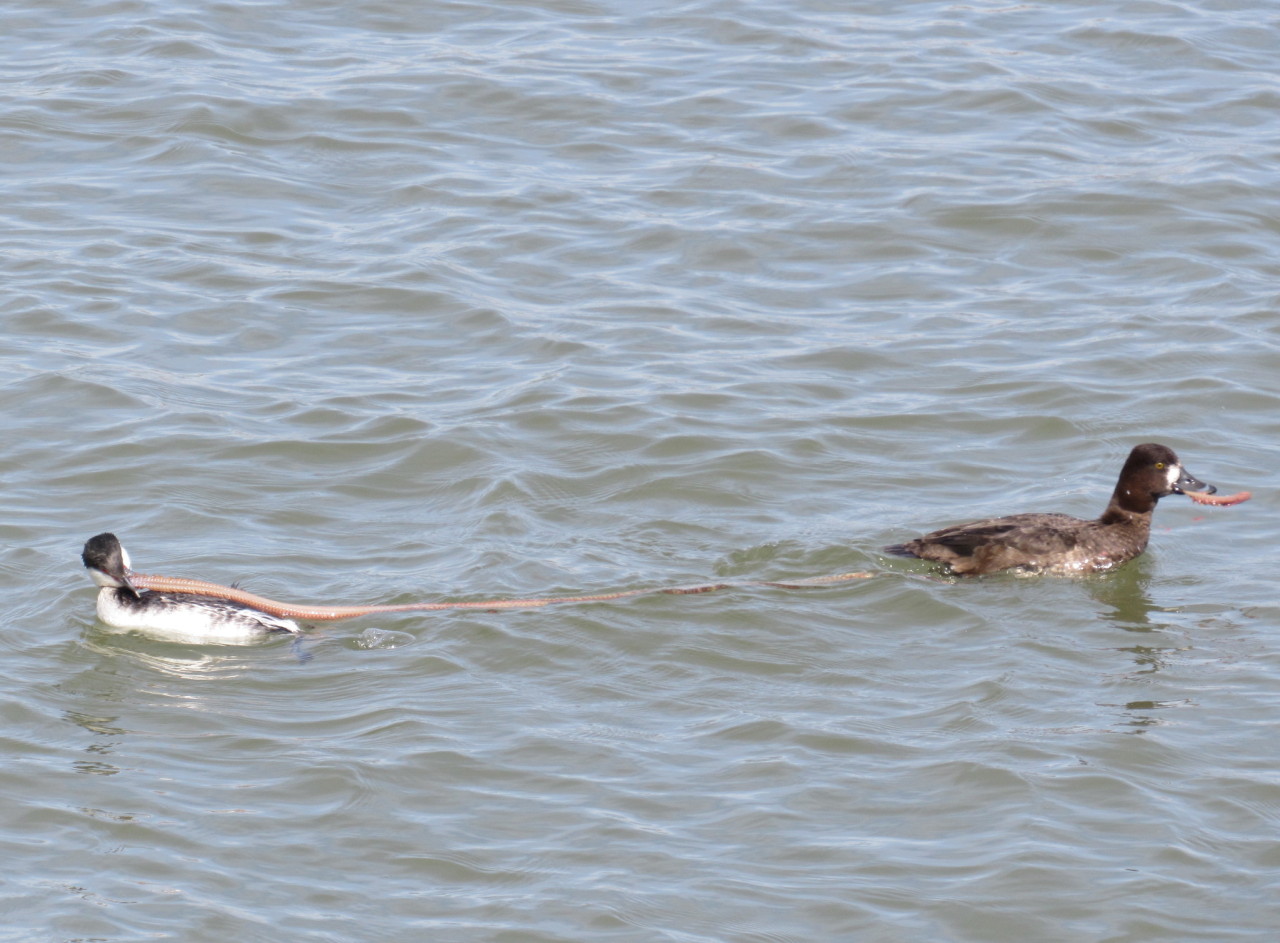Observation of the Week, 3/9/17

This Alitta polychaete worm, seen in California by @raulagrait, is our Observation of the Week!
Born and raised in Puerto Rico, “with iguanas climbing into in my bathtub and lizards always nearby when I played outside or in my backyard,” Raul Agrait is now a San Francisco Bay Area resident. By day he’s a software engineer (“I once fixed a bug on iNaturalist for iOS - hooray!”), but he’s also become an amateur naturalist.
“My wife introduced me to BioBlitzes and iNaturalist a few years ago, and it has completely changed the way I interact with nature,” Raul explains. “I've always enjoyed going on long hikes and being outdoors, but since I've started using iNaturalist, I've gained such a deep appreciation of the intense diversity that is around us.”
Facing a deadline at work the other week, Raul felt he needed to take a nature break during lunch, so he drove to nearby Candlestick Point State Recreation Area to photograph some birds. He continues,
After walking for a short while, I saw the Horned Grebe and noticed that it seemed to be pulling on something. From a distance, I thought it might be a piece of kelp, because I noticed that it dragged on for quite a way behind the Grebe...then I noticed that a duck started following the Grebe and grabbed ahold of the other end of the worm. At first they swam in the same direction, but after a bit they started doing a tug of war and pulling in opposite directions..After a while, about a half dozen other Scaups joined in and started gnawing at the worm as well.

Eventually several other Scaups joined in the fray, but unfortunately Raul had to return to work so he couldn’t capture the rest of the feeding frenzy. “Frankly, I had no idea what kind of worm that was, or if it even was a worm at all, and find it so amazing that it could be identified and shared with so quickly by experts in the field,” he says.
iNat user @leslieh, marine worm identifier extraordinaire, was able to get this worm to the genus Alitta. Like all polychaetes it has a body made of segments that have parapodia, or protrusions on each side. These parapodia often end in bristles called setae, and are used for locomotion as well as respiration. When immature it often lives on the seafloor, but when sexually mature it begins swimming to find mates, often in spring or summer.

Not only does Raul go on solo nature jaunts (“[iNaturalist] makes my brief walks in the middle of the city mini adventures where I can now identify House Sparrows, Bushtits, Anna's Hummingbirds, and Red Admirals.”), nature and iNaturalist have become a family affair:
Our whole family enjoys browsing through observations on iNaturalist together, we use it to plan our family outings ("What species are nearby here?", "What's the closest place we can see this bird?"), and will share observations with each other as readily as news articles. My daughter, who also uses iNaturalist, went away to college out of state this past year, and one of my favorite things in the world is when she shares her observations with me ("Look at this different Phoebe!", "I finally saw a Belted Kingfisher!").
- by Tony Iwane
- Of course there’s a video of an Alitta brandti (here known by a synonym, Nereis brandti), this one found off the coast of Oregon. A great look at its parapodia at work.
- And more wormy wonders of the ocean.
- July 1st is International Polychaete Day, and the Smithsonian posted a great article listing 14 facts about polychaetes!
Update, July 1, 2020: this post originally called the worm Alitta brandti, but @leslieh's comment below tells us that species is not on North America's Pacific coast, so I've updated the text to reflect that.





Comments
WOW! ...just found your great shots from link to the Worm family from this weeks obs. of the week! Pretty amazing to see such a big Worm!!
Time for an update. A paper published in 2018 by Tulio Guererro-Villalobos & Torkild Bakken confirmed that we don't have true Alitta brandti on our coast. Instead we have Alitta plenidentata in southern and central California and Alitta williami from central California probably up to Alaska. Since both may occur in the SF region we have to leave the id on Raul's worm at the genus level - Alitta sp.
Thanks @leslieh!
Add a Comment